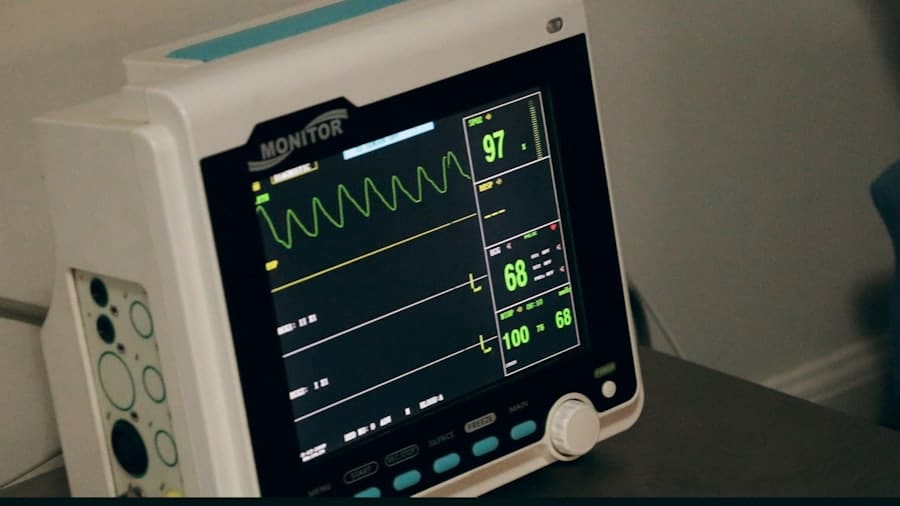In the rapidly evolving landscape of healthcare, the medical software stack has emerged as a critical component in enhancing patient care, streamlining operations, and ensuring compliance with regulatory standards. As healthcare organizations increasingly rely on technology to manage patient data, improve clinical workflows, and facilitate communication, understanding the various layers of the medical software stack becomes essential for IT decision-makers and healthcare professionals alike. This stack encompasses a range of applications and systems, each designed to address specific needs within the healthcare ecosystem, from electronic health records (EHR) to telemedicine platforms.
The relevance of the medical software stack cannot be overstated. With the ongoing digital transformation in healthcare, organizations are tasked with integrating diverse technologies while maintaining high standards of patient care and data security. As we look toward 2025, it is crucial to explore the components of this stack, the challenges faced by healthcare providers, and the best practices that can be adopted to optimize these technologies.
By doing so, healthcare professionals can better navigate the complexities of modern healthcare IT and leverage these tools to improve patient outcomes.
Key Takeaways
- The medical software stack is a collection of technology tools used in healthcare settings to manage patient data, streamline operations, and improve patient care.
- Electronic Health Records (EHR) in 2025 are expected to be more advanced, user-friendly, and interoperable, allowing for seamless data exchange between different healthcare providers and systems.
- Practice management software will continue to evolve to include features such as appointment scheduling, billing, and reporting, to help healthcare practices run more efficiently.
- Telemedicine and virtual care platforms are anticipated to become more widely adopted, offering patients and providers convenient and effective ways to communicate and deliver care remotely.
- Revenue cycle management and billing software will play a crucial role in helping healthcare organizations optimize their financial processes and ensure accurate and timely reimbursement.
Electronic Health Records (EHR) in 2025
Enhanced Clinical Documentation with AI and Machine Learning
EHRs have already transformed clinical documentation by providing a centralized repository for patient data. However, future iterations will likely incorporate more sophisticated features such as artificial intelligence (AI) and machine learning algorithms. These technologies will enable predictive analytics, allowing healthcare providers to identify potential health risks and tailor interventions accordingly.
Seamless Interoperability for Improved Care Coordination
Moreover, interoperability will be a key focus for EHR systems in 2025. The ability for different EHR platforms to communicate seamlessly will enhance care coordination among providers and improve patient outcomes. For instance, a patient visiting multiple specialists will benefit from having their complete medical history accessible in real-time, reducing the risk of errors and duplicative testing.
By doing so, healthcare providers can ensure that patient information is accurate, up-to-date, and easily accessible, ultimately leading to better health outcomes.
Practice Management Software

Practice Management Software (PMS) serves as the backbone of administrative operations within healthcare facilities. By automating scheduling, billing, and patient registration processes, PMS enhances operational efficiency and allows healthcare providers to focus more on patient care rather than administrative burdens. As we move toward 2025, PMS solutions are expected to evolve further, incorporating advanced analytics and reporting capabilities that provide insights into practice performance.
One of the significant challenges faced by healthcare organizations is managing patient flow effectively. An efficient PMS can help mitigate this issue by optimizing appointment scheduling based on patient needs and provider availability. Additionally, with the rise of value-based care models, PMS will need to adapt to track quality metrics and support reimbursement processes tied to patient outcomes.
By leveraging data-driven insights from PMS, healthcare organizations can make informed decisions that enhance both operational efficiency and patient satisfaction.
Telemedicine and Virtual Care Platforms
The COVID-19 pandemic accelerated the adoption of telemedicine and virtual care platforms, fundamentally changing how patients access healthcare services. By 2025, these platforms are expected to become an integral part of routine care delivery, offering patients greater flexibility and convenience in managing their health. Telemedicine not only expands access to care for patients in remote areas but also allows for timely interventions that can prevent complications.
However, the rapid expansion of telemedicine also presents challenges related to technology integration and user experience. Healthcare organizations must ensure that their telemedicine platforms are user-friendly and compatible with existing systems such as EHRs and PMS. Additionally, addressing concerns around reimbursement policies and regulatory compliance will be crucial for sustaining telemedicine services.
By investing in robust virtual care solutions that prioritize security and ease of use, healthcare providers can enhance patient engagement and satisfaction.
Revenue Cycle Management and Billing Software
Revenue Cycle Management (RCM) is a critical aspect of healthcare operations that directly impacts an organization’s financial health. Effective RCM software streamlines billing processes, reduces claim denials, and ensures timely reimbursements from payers. As we approach 2025, RCM solutions are expected to leverage automation and AI to enhance accuracy and efficiency in billing practices.
One of the primary challenges in RCM is navigating the complexities of insurance claims processing. With an increasing number of payers and varying reimbursement models, healthcare organizations must adopt RCM software that can adapt to these changes seamlessly. Furthermore, integrating RCM with EHRs and PMS will provide a holistic view of patient encounters, enabling better financial forecasting and resource allocation.
By prioritizing RCM solutions that incorporate advanced analytics and reporting features, healthcare organizations can optimize their revenue cycle while minimizing administrative burdens.
Patient Engagement and Communication Tools

Patient engagement is a cornerstone of effective healthcare delivery, as it fosters collaboration between patients and providers in managing health outcomes. In 2025, we can expect a surge in innovative patient engagement tools that facilitate communication through various channels such as mobile apps, patient portals, and secure messaging systems. These tools empower patients to take an active role in their care by providing access to health information, appointment scheduling, and educational resources.
However, achieving meaningful patient engagement requires overcoming barriers such as digital literacy and access to technology. Healthcare organizations must prioritize user-friendly interfaces that cater to diverse patient populations while ensuring compliance with regulations like HIPABy implementing comprehensive communication strategies that leverage technology effectively, providers can enhance patient satisfaction and adherence to treatment plans.
Integration and Interoperability in the Medical Software Stack
Integration and interoperability are critical components of a successful medical software stack. As healthcare organizations adopt multiple software solutions—ranging from EHRs to telemedicine platforms—the ability for these systems to communicate effectively becomes paramount. In 2025, we anticipate a greater emphasis on developing standardized protocols that facilitate data exchange across disparate systems.
The challenges associated with integration often stem from varying data formats and proprietary systems that hinder seamless communication. To address these issues, healthcare organizations should prioritize solutions that adhere to industry standards such as Fast Healthcare Interoperability Resources (FHIR). By fostering interoperability within their medical software stack, providers can ensure that critical patient information is readily available at the point of care, ultimately improving clinical decision-making.
Security and Compliance in Medical Software for 2025
As technology continues to advance within the healthcare sector, security and compliance remain top priorities for organizations managing sensitive patient data. The increasing prevalence of cyber threats necessitates robust security measures that protect against data breaches while ensuring compliance with regulations such as HIPAIn 2025, we expect to see a heightened focus on cybersecurity protocols that incorporate advanced technologies like encryption, multi-factor authentication, and continuous monitoring. Healthcare organizations must also stay informed about evolving regulatory requirements related to data privacy and security.
Implementing comprehensive training programs for staff on best practices for data protection will be essential in mitigating risks associated with human error. By prioritizing security measures within their medical software stack, healthcare providers can safeguard patient information while maintaining trust with their patients. In conclusion, as we look toward 2025, the medical software stack will continue to evolve in response to emerging technologies and changing healthcare dynamics.
By understanding the key components—EHRs, practice management software, telemedicine platforms, revenue cycle management tools, patient engagement solutions, integration strategies, and security measures—healthcare professionals can navigate this complex landscape effectively. Embracing these advancements will not only enhance operational efficiency but also improve patient outcomes in an increasingly digital world. Key Takeaways:
– The medical software stack is essential for optimizing healthcare delivery.
– EHRs will focus on interoperability and predictive analytics by 2025.
– Practice management software will enhance operational efficiency through automation.
– Telemedicine platforms will become integral to routine care delivery.
– Revenue cycle management solutions will leverage AI for improved billing accuracy.
– Integration and interoperability are critical for seamless data exchange.
– Security measures must evolve alongside technological advancements to protect patient data.
By adopting these insights into their strategic planning, healthcare professionals can position themselves at the forefront of innovation in medical software technology while ensuring compliance with regulatory standards and enhancing patient care outcomes.
In addition to implementing a complete medical software stack for 2025, accounting firms can enhance efficiency and compliance by utilizing essential tools outlined in this article. These tools can help streamline processes and ensure that all financial transactions are accurately recorded and compliant with regulations. Additionally, accounting firms should not overlook cybersecurity measures, as highlighted in this article, to protect sensitive client data from cyber threats. By addressing cybersecurity challenges specific to the accounting industry, as discussed in this article, accounting firms can safeguard their operations and maintain trust with clients.
FAQs
What is the purpose of a medical software stack?
A medical software stack is designed to streamline and integrate various aspects of healthcare operations, including electronic health records (EHR), practice management, billing, and other administrative tasks.
What are the key components of a complete medical software stack for 2025?
The key components of a complete medical software stack for 2025 include electronic health records (EHR), practice management software, medical billing software, telemedicine platforms, and patient engagement tools.
How does electronic health records (EHR) software benefit healthcare providers?
EHR software allows healthcare providers to efficiently manage patient records, track patient progress, and improve communication among care team members. It also helps in decision-making, reduces errors, and enhances patient safety.
What are the advantages of using practice management software in a medical practice?
Practice management software helps medical practices streamline administrative tasks such as appointment scheduling, patient registration, billing, and reporting. It also improves efficiency, reduces paperwork, and enhances the overall patient experience.
How does medical billing software contribute to the revenue cycle of a healthcare organization?
Medical billing software automates the billing process, helps in claims management, and ensures accurate and timely reimbursement for healthcare services. It also reduces billing errors and improves revenue cycle management.
What role do telemedicine platforms play in the modern healthcare landscape?
Telemedicine platforms enable healthcare providers to deliver remote care, consult with patients virtually, and expand access to medical services. They also support remote monitoring and improve patient engagement.
How do patient engagement tools enhance the patient experience?
Patient engagement tools, such as patient portals and secure messaging systems, empower patients to access their health information, communicate with their care team, and actively participate in their own care. This leads to improved patient satisfaction and outcomes.


